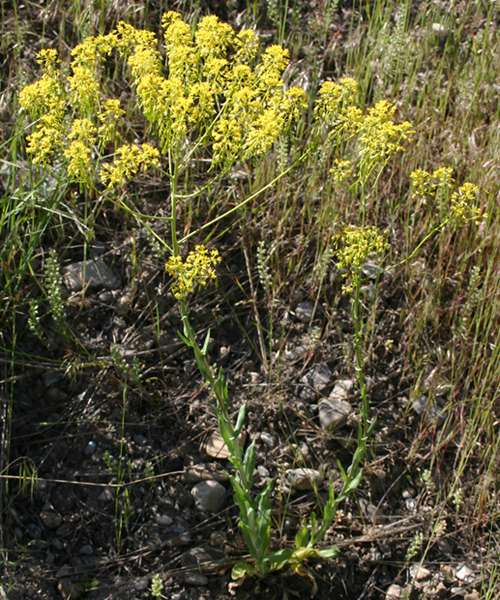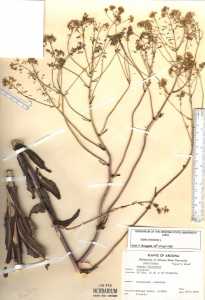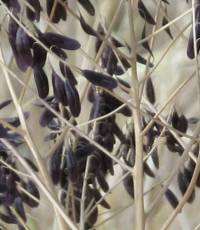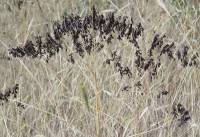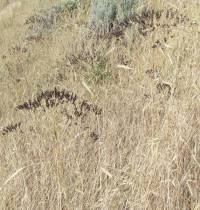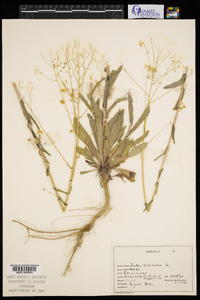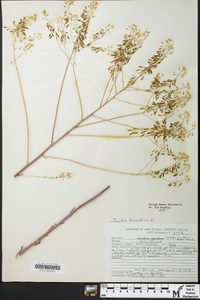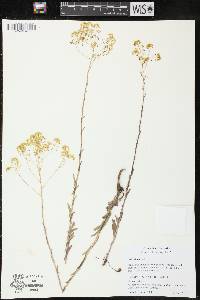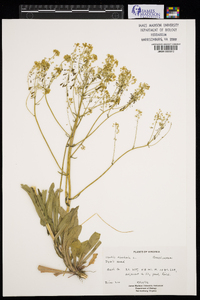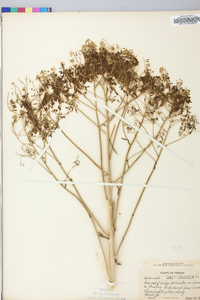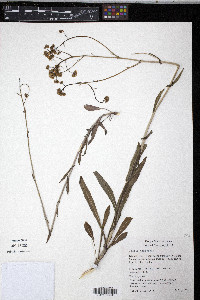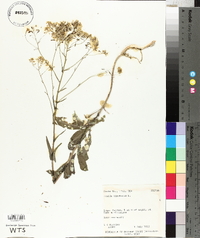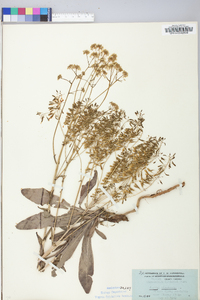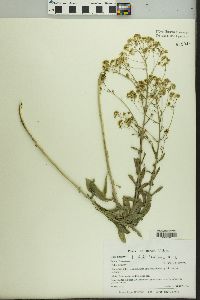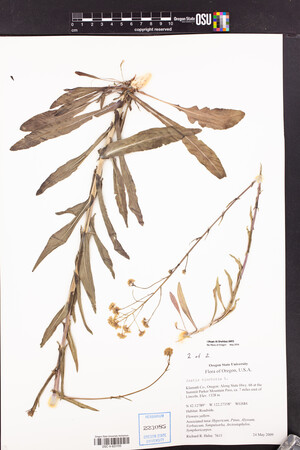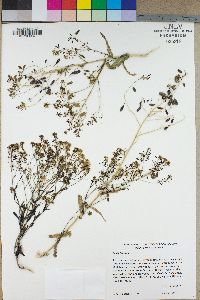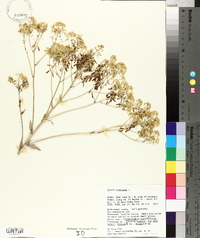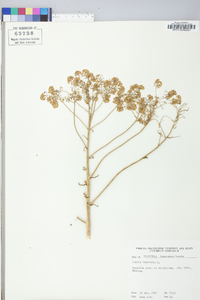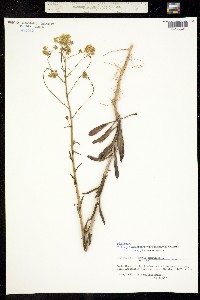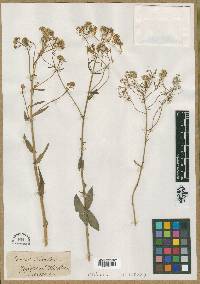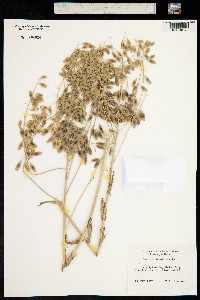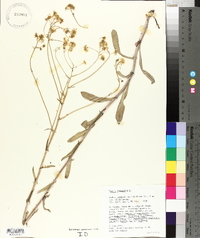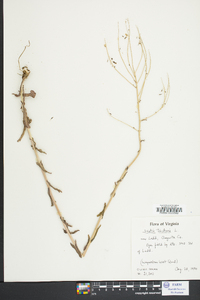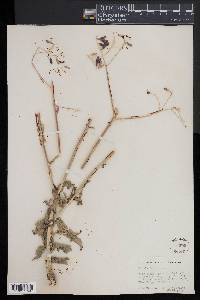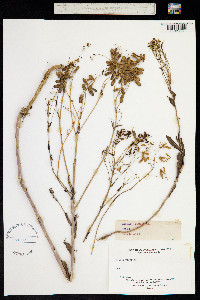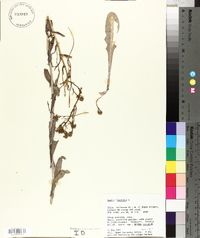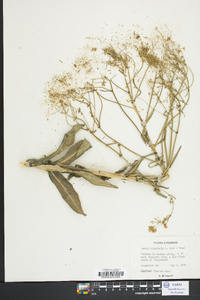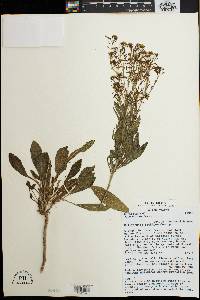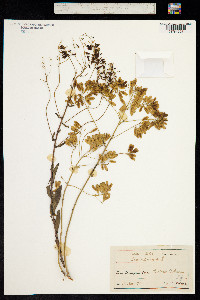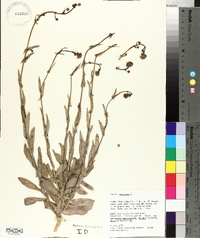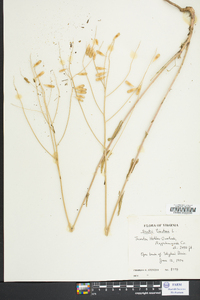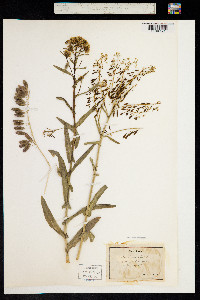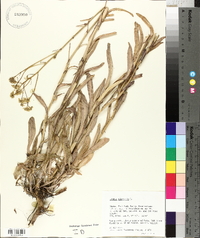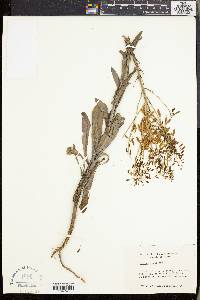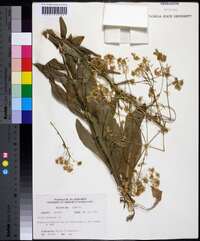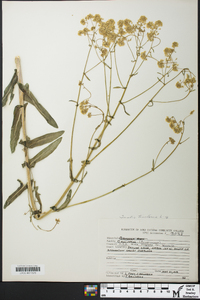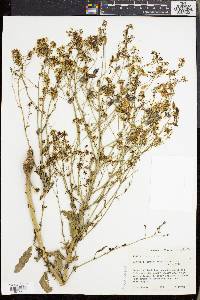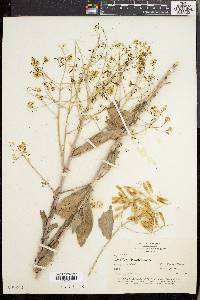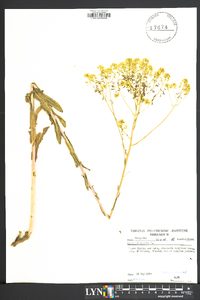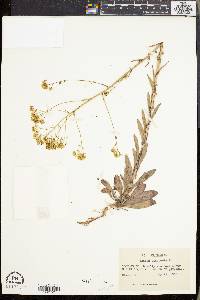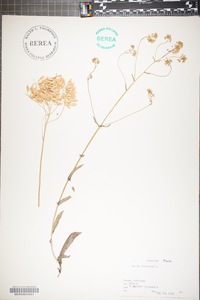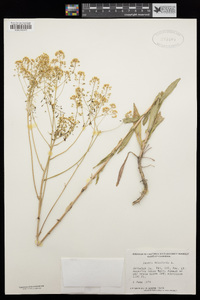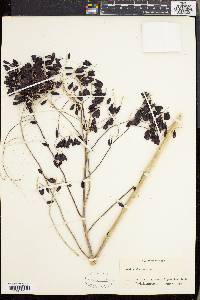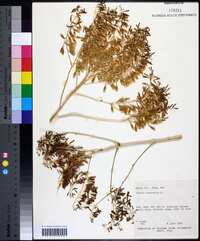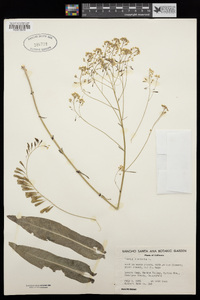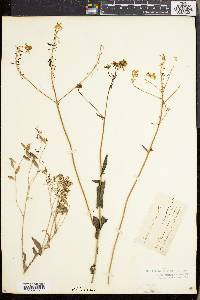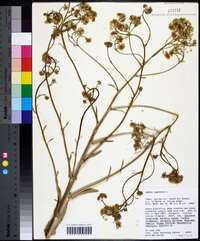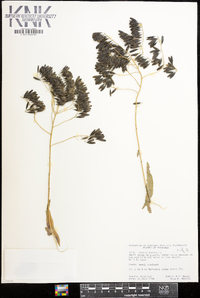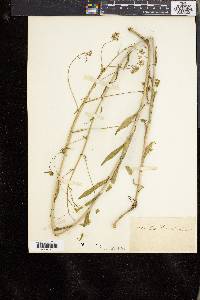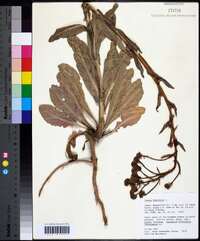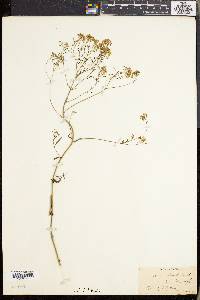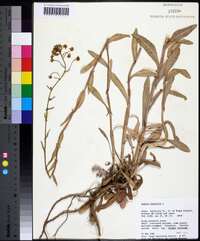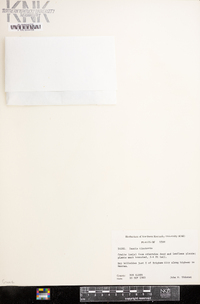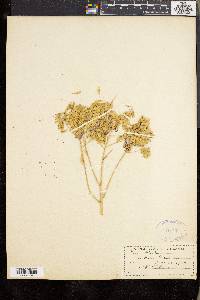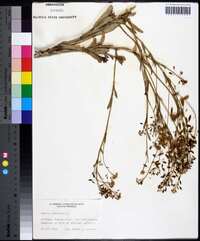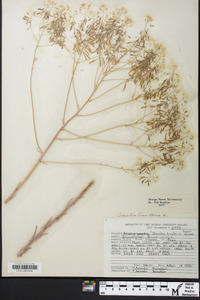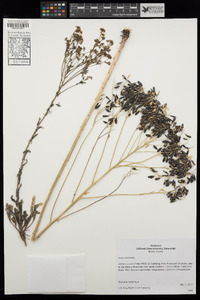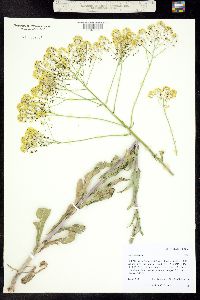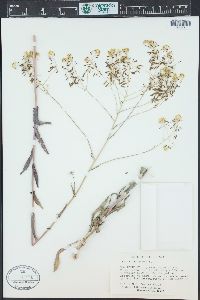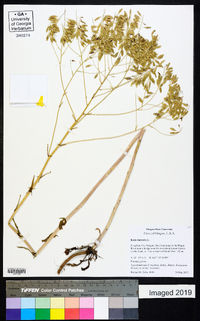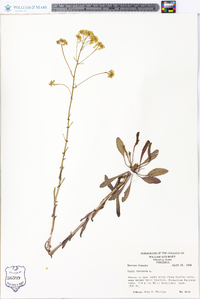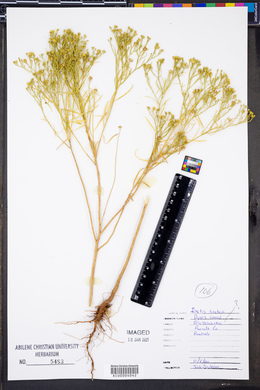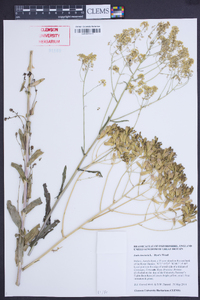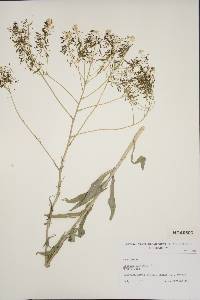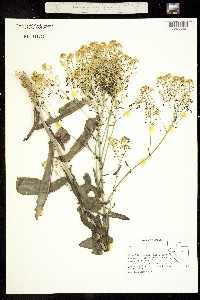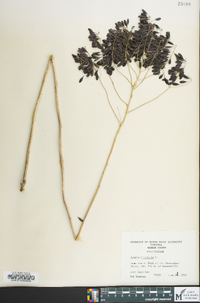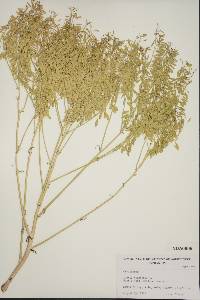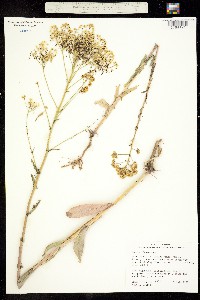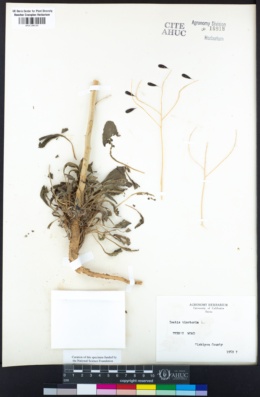Isatis tinctoria
|
|
|
|
Family: Brassicaceae
Dyer's-Woad, more...dyer's woad
[Isatis praecox Kit. ex Tratt.] |
Plants glaucous, usually glabrous, sometimes pubescent proximally. Stems (3-)4-10 (-15) dm. Basal leaves: petiole 0.5-5.5 cm; blade oblong or oblanceolate, (2.5-)5-15(-20) cm × (5-)15-35(-50) mm, base attenuate, margins entire, repand, or dentate, apex obtuse. Cauline leaves: blade usually oblong or lanceolate, rarely linear-oblong, base sagittate or auriculate, apex acute. Fruiting pedicels 5-10 mm. Flowers: sepals 1.5-2.8 × 1-1.5 mm, glabrous; petals 2.5-4 × 0.9-1.5 mm, base attenuate; filaments 1-2.5 mm; anthers 0.5-0.7 mm. Fruits black or dark brown, often broader distal to middle, (0.9-)1.1-2(-2.7) cm × 3-6(-10) mm, base cuneate, margins sometimes slightly constricted, apex usually subacute or rounded, rarely subemarginate; locule with distinct midvein, lateral veins inconspicuous, 3-6(-10) mm; apical wing 3.5-5(-7) mm wide. Seeds light brown, 2.3-3.5(-4.5) × 0.8-1 mm. 2n = 14, 28. Flowering Apr-Jun. Roadsides, fields, pastures, sagebrush hillsides, prairies, railroad embankments, waste places; 300-2200 m; introduced; B.C., Nfld. and Labr. (Nfld.), Ont., Que.; Calif., Idaho, Ill., Mo., Mont., Nev., N.Mex., N.Y., Oreg., Utah, Va., Wash., W.Va., Wyo.; Europe; c, sw Asia; n Africa; introduced also in South America (Chile, Peru). Isatis tinctoria has been cultivated since ancient times as a source of a blue dye (woad) obtained by fermenting the ground leaves and proximal portions of the plant.
Biennial herb 0.5 - 1.2 m tall Stem: usually single, branched, with a waxy coating (glaucous). Flowers: 6 mm wide, in branched clusters (raceme). Sepals four, spreading, somewhat unequal. Petals four, yellow, exceeding the sepals, bases narrowed, tips rounded. Stamens six. Fruit: an indehiscent pod, drooping, short-stalked, often tinged blue, 8 - 15 mm long, 2.5 - 6 mm wide, oblong to reverse egg-shaped (with the narrower end toward the stem), flattened, center thickened and corky. Seed single and in the middle of the pod. The pods resemble tiny ash fruit (samaras). Basal leaves: long-stalked, reverse lance-shaped, with a waxy coating (glaucous). Stem leaves: alternate, clasping, stalkless, 2 - 10 cm long, lance-shaped to oblong, bases lobed, non-toothed or nearly so, with a waxy coating (glaucous). Similar species: No information at this time. Flowering: May to June Habitat and ecology: Introduced from Europe. In the Chicago Region known only from a specimen collected in Chicago in 1893. It is a rare escape from cultivation. Occurence in the Chicago region: non-native Notes: Once cultivated as a source of blue dye. Etymology: Isatis comes from the Ancient Greek name for this plant. Tinctoria means "used in dyeing." Author: The Morton Arboretum Biennial, usually single-stemmed, 5-12 dm, glabrous and glaucous; basal lvs oblanceolate, long-petioled; cauline lvs sessile, lanceolate to oblong, mostly 2-10 cm, entire or nearly so, auriculate-clasping; infl of numerous racemes, forming a large terminal panicle; fls 6 mm wide; frs drooping on short, slender pedicels, oblong to obovate, mostly 8-15 נ2.5-6 mm, thickened and corky in the center; 2n=28. Native of Europe, where traditionally cult. as the source of a blue dye; occasionally found as a weed in our range. May-July. Gleason, Henry A. & Cronquist, Arthur J. 1991. Manual of vascular plants of northeastern United States and adjacent Canada. lxxv + 910 pp. ©The New York Botanical Garden. All rights reserved. Used by permission. |

